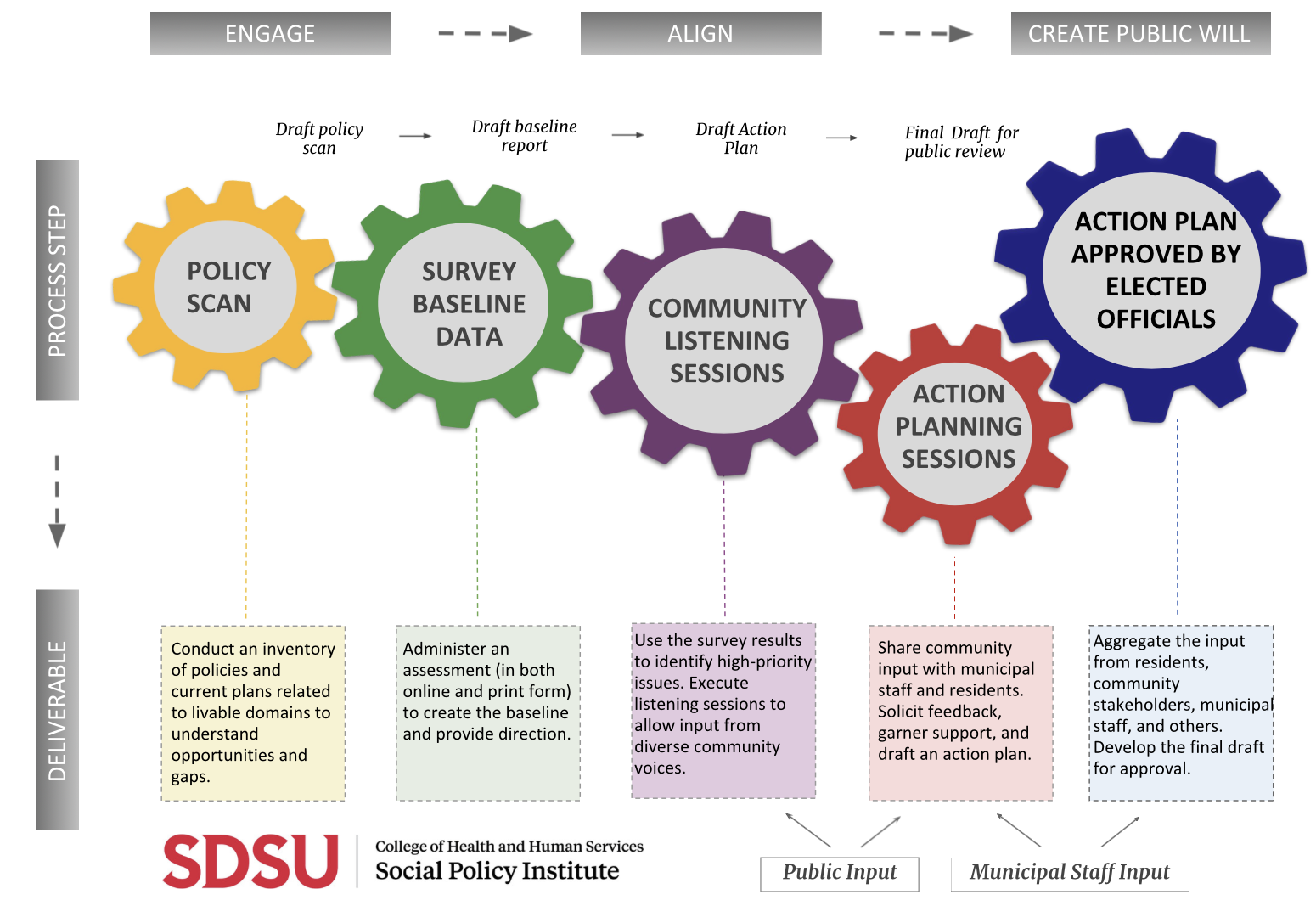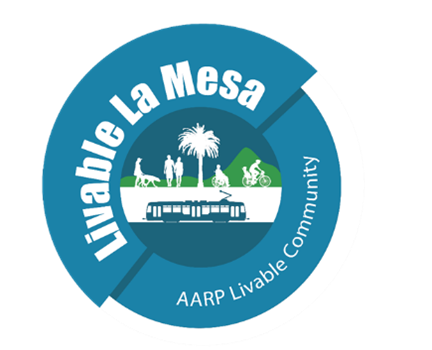The demographic landscape is undergoing rapid change, characterized by both an aging population and increasing diversity. By the year 2030, one in four individuals in California is projected to be over the age of 65. By 2035, the number of older adults will surpass those under the age of 18 for the first time in history. These shifting demographics demand a fundamental reevaluation of policies and programs to ensure their relevance and effectiveness for people of all ages.
Communities worldwide, including those here in San Diego County, are embracing the World Health Organization’s (WHO) imperative to join and the Age-Friendly Communities movement. Nationally, this initiative, championed by AARP Network of Age-Friendly States and Communities, has already seen more than 800 municipalities across the country launch their own Age-Friendly Communities initiatives.

Our Work

The SDSU Social Policy Institute (SPI) and Center for Excellence in Aging & Longevity (CEAL) are on the forefront in San Diego County working with municipalities in developing Age-Friendly Communities and is mission-driven to share lessons learned and support other regions in the work.
For nearly a decade, SPI/CEAL has been at the forefront of Age-Friendly Community initiatives. Our team played a pivotal role as a service provider and community partner in San Diego County’s journey towards becoming an age-friendly county and worked with municipalities to facilitate extensive community engagement and develop a community-specific age-friendly action plan.
Age-Friendly Action Plans
The age-friendly action plan examines an array of success factors, encompassing various domains of livability that span both the built and social aspects of the environment. The primary focus of this discussion revolves around the exploration and identification of strategies through which our city and community can adopt a perspective that fosters the well-being and successful aging of its residents. In essence, it serves as a catalyst, raising awareness and offering a discerning ‘filter’ or ‘lens’ through which we perceive and build our infrastructure and support systems.

The World Health Organization developed a comprehensive Global Age-Friendly Cities guide that deconstructs age-friendly attributes into distinct domains. Historically, urban environments have predominantly catered to the needs of those who are able-bodied, mobile, and largely self-reliant. The age-friendly concept sparks essential conversations about reshaping communities to accommodate the requirements of both the very old and very young, thereby fostering a vibrant and supportive place for all.
Older adults, people with disabilities, and family caregivers are valuable members of our communities. Many want to remain active and engaged while living independent lives. As this demographic grows and becomes more diverse, it is critically important to plan for and meet as many anticipated needs as possible — with an equity lens embedded in all decision-making.
Blueprint for Building Livable Communities
As part of our mission to assist municipalities, we created the Blueprint for Livable Communities. This resource serves as a valuable tool for community decision makers to effectively address the multifaceted needs of residents spanning all ages.

We collaborated with the following municipalities:
Resources
– AARP Network of Age-Friendly States and Communities
– WHO Age-Friendly World
– County of San Diego- Age Well San Diego
– US Aging- Livable Communities
– San Diego Foundation Age-Friendly Communities
Community Partners



For more information contact Brenda Bothel-Hammond at bbothelhammond@sdsu.edu.










